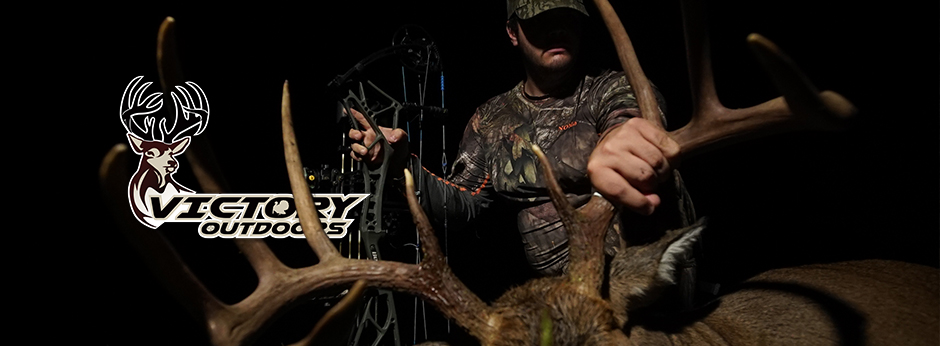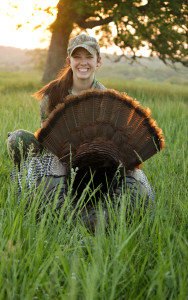By: Meagan Duffee-Yates
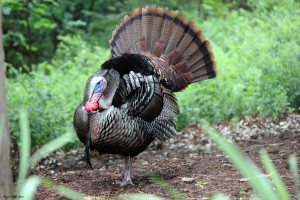 Turkey season is just around the corner for many states and being prepared will help get you a long way when opening day arrives. Patterning your turkey now will ensure that you will know the best places to set up on opening morning, promising you a good chance to hear those thunderous gobbles and a strutting tom. With these four tips you are sure to put a tag around those strutters and enjoy some fresh turkey breast.
Turkey season is just around the corner for many states and being prepared will help get you a long way when opening day arrives. Patterning your turkey now will ensure that you will know the best places to set up on opening morning, promising you a good chance to hear those thunderous gobbles and a strutting tom. With these four tips you are sure to put a tag around those strutters and enjoy some fresh turkey breast.1. Look for Sign
Turkey sign comes in many forms. Turkey are creatures of habit and if you can locate the areas that they use on a daily basis you are almost promised to have a strutter slung over your shoulders. Look for fresh droppings, toms and jakes will be “J” shaped and hen’s are swirled. Typically you can find fresh droppings under their roosting sites, which are typically in the same locations unless they have been frightened.
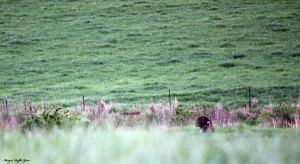 Turkey tracts are a good indication that there are birds nearby, and drag marks in the ground are made by a strutting tom. But sign can come in other forms. In order to keep their feathers healthy and parasite free turkey’s regularly take dust baths. These spots are typically in a sunny location, though do not over look a sunny patch in the woods. These dusting areas will be bare and you may find over turned leaves from where they have been feeding.
Turkey tracts are a good indication that there are birds nearby, and drag marks in the ground are made by a strutting tom. But sign can come in other forms. In order to keep their feathers healthy and parasite free turkey’s regularly take dust baths. These spots are typically in a sunny location, though do not over look a sunny patch in the woods. These dusting areas will be bare and you may find over turned leaves from where they have been feeding.2. Know Your Terrain
You spent your archery in a stand, high above the ground. Unmoving. You may have seen turkey, but like deer their patterns change with the season and you need to get out to learn the terrain that you plan on hunting. Thinking like a turkey is best, knowing their patterns is better. If you can locate turkey sign you are on the right track, but understanding how turkey’s use the terrain and why is best.
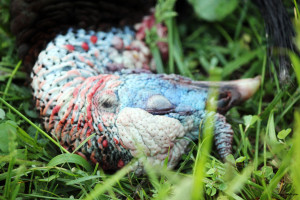 Turkey’s have their preferred roosting trees and knowing where they fly down is important. Where there are hens there will be toms. Locating their preferred food source is important but if you can find where a tom’s strutting area is located then you are in business. Toms like to be seen and if your property is open crop lands he’ll more than likely be strutting in the open fields. But if you are located in hill country locate those ridges with open woods. Never over look areas with water, especially on those warm spring days when the tom’s have been left behind when the hens go to nest.
Turkey’s have their preferred roosting trees and knowing where they fly down is important. Where there are hens there will be toms. Locating their preferred food source is important but if you can find where a tom’s strutting area is located then you are in business. Toms like to be seen and if your property is open crop lands he’ll more than likely be strutting in the open fields. But if you are located in hill country locate those ridges with open woods. Never over look areas with water, especially on those warm spring days when the tom’s have been left behind when the hens go to nest.3. Use Trail Cameras
With modern technology we are able to capture nature in the act, including setting up trail cameras in locations where you have been seeing turkey sign. After locating fresh sign and if you have a trail camera you can always set up in a location where you think is the best angle to capture the action. March is when those turkey’s begin to fight for dominance, gobble and strut. Locate a good location that will allow the best possible angle for capturing pictures of turkey. Try not to check your camera daily, as you could possibly force these birds to another area. Setting up cameras in multiple locations is ideal, allowing you to pattern your birds daily and even hourly.
Sometimes nothing can beat getting out and doing some scouting. Not only does this allow you to know every nook and cranny of the property that you will be hunting, but it allows you to get your hands “dirty” and locating sign in places that you may have over looked before. If you can locate sign, know your terrain and scout either on foot or with trail cameras, you are likely to harvest a tom this upcoming spring.
